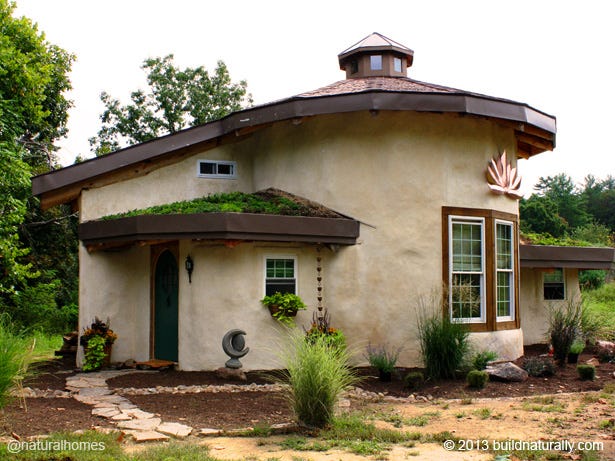#Seed042: Building Home-Grown Communities
Why local hands, local materials, and local wisdom matter

“Culture, like the sap in a tree, rises from the roots,” wrote Egyptian architect Hasan Fathy, “but when poured from above, it congeals like damp sugar.” In 1945, Egyptian architect Hasan Fathy set out to prove that the rising cost of housing across the country could be addressed using materials readily available to the people; in his case, mud bricks from the Nile. He believed that housing people could build themselves would not only be affordable but also aesthetically pleasing and spiritually uplifting. It would deepen a sense of belonging and pride it place. Given the exuberant cost of importing wood, Fathy worked with a group of Egyptian peasants and craftsmen to establish New Gourna in Upper Egypt. The legacy of his work continues to ring true almost a century later.
Places and organisations that are built and stewarded by the people who inhabit them outlast generations. Throughout history, people were tied to the land, which they cultivated and cared for. Unless there was a significant event or crisis, families generally stayed in and around a particular place. However, with the rise of rapid industrialization, abundant energy, and global market economics, our instinct to care for and conserve our surroundings began to fade. We started to move to distant lands, and families become atomized. Ironically, those distant lands usurped our inherent kinship with place and replaced it with an insistent, homogenizing sameness. It no longer mattered where we were and where our children will be.
The impact of this mindset is profound. Urban planners, architects, and developers are less likely to design well because doing so isn’t cost effective. The goal is to maximize profits as quickly as possible. Though those of the likes of Hasan Fathy would argue that traditional buildings are not only sustainable but economically viable, profit margins are determined by time. In other words, immediate revenue is prioritized over the patient cultivation of long-term value. This short-term mindset severs our connection to place. If homes are perceived as capital investments, then their purpose isn't to serve as dwellings but to make profit. Our houses no longer serve their initial purpose, they cease to be homes.
People have lost sight of the vernacular. Vernacular (from the Latin vernas meaning home-grown) architecture was foundational to Fathy’s perspectives on buildings and communities. Fathy inspired a vernacular logic that considers local climate, materials, and culture first, then design elegantly around them. The vernacular logic can indeed be applied anywhere but once applied becomes rooted in somewhere.
Vernacular buildings naturally capture a strong sense of place and identity because they reflect the materials of their immediate surroundings. These buildings are built by ordinary people. Hasan Fathy argued that modern architecture, with its emphasis on academic credentials, became disconnected from local needs and contexts.1 On the contrary, vernacular-inspired architects balance theory with listening. They become facilitators of timeless wisdom rather than imposed authority.
If the architect offers the vision, it is the craftsman who embodies the spirit of place. In traditional societies, local knowledge of materials, climate conditions, and construction are passed down over generations through culture, stories, myths, poetry, and folklore. Local builders and artisans are the carriers of tradition. Regardless of the medium, the craftsman must have an intimate relationship with the materials and the environment. Consequently, they adapt to changing conditions, not because of a centralized force telling them to do so, but rather for the well-being of their families and communities. They care about their home because they built it.
The dwelling and the craftsman are inseparable. When the craftsman is intimately aware of his home, then he becomes an active participant in community building. This becomes even more evident when materials are sourced locally. From the adobe structures of Upper Egypt to straw bale buildings in temperate climates, materials that are easily accessible and exchanged between community members contribute to that sense of belongings. Structures are repaired, renovated, and tweaked using those very materials, in a continuous process that spans generations. Furthermore, the technical know-how gets passed down alongside the wisdom traditions that preserves the community’s moral integrity.
Christopher Alexander once noted that vernacular environments evolve like living tapestries, woven by countless acts of craftsmanship and adjustment. He wrote, “Within this process, every individual act of building is a process in which space gets differentiated. It is not a process of addition, in which preformed parts are combined to create a whole, but a process of unfolding, like the evolution of an embryo, in which the whole precedes the parts, and actually gives birth to them, by splitting.” In this process, making is a form of thinking. Not only does this elevate the craftsman to the designer of the community, but unites him to the very act of design. Architect and builder become one.
When it comes to community design and organising, the architect and builder are often at odds, creating a tension between home and house. The home is sustained by love and lived experience; the house is merely its physical shell. The latter is the body while the former is the soul. Communities become homes when dwellers fine-tune those places. It is in their best interest to shape the built environment beyond their lifespan. If culture is to flow like sap from the roots, as Fathy imagined, then our homes and communities must grow from the ground up; shaped by the hands, wisdom, and love of those who dwell within them. Only then can the house become a home, and the built world a living reflection of its place.
https://www.greenprophet.com/2023/10/new-gourna-hassan-fathy-sustainable-architecture-egypt/



